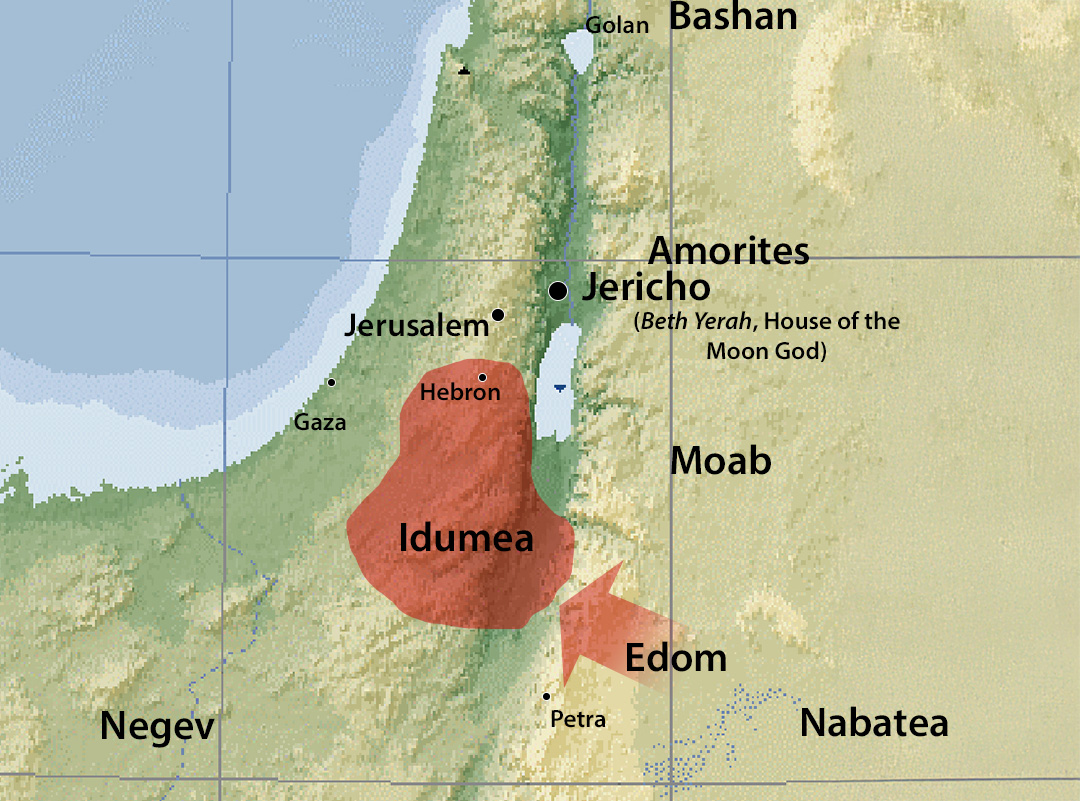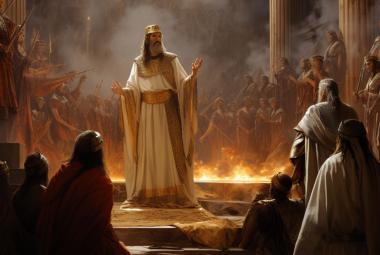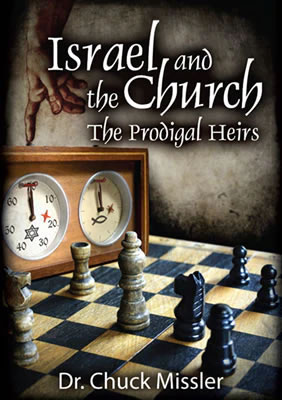There are more Bible passages pronouncing judgment on the Edomites than on any other nation.1 But who are they? What relevance do they have for us today? As diligent students of the Word of God, it is essential for us to understand who they are and what eschatological implications they may have on our present geopolitical horizon.
The Everlasting Hatred
The covenant birthright was a point of contention between Sarah vs. Hagar,2 Isaac vs. Ishmael,3 and which then became the root of the איַבת עוָלם, eybah ‘olam,—the “Everlasting Hatred”—beginning in the womb with Esau and Jacob, and Esau’s subsequent contempt of the covenant birthright,4 and resulting in Esau’s spiteful intermarriage with the Ishmaelites, which continued the “everlasting hatred” to this very day.5 Recognition of this “Everlasting Hatred”—and its embodiment in Islam—is essential to our understanding its eschatological implications, as well as the daily newscasts that dominate our mainline press.
The tensions continued as Israel, after the exodus from Egypt, was denied passage through their land of Edom.6 The misleading nature of the maps in many of our Bibles cause us to assume that the Edomites were confined east of the Jordan, south of Moab. However, the Edomites (“Idumeans” in Greek), under pressure from the Nabateans in the east, migrated west and established their own “Idumea” (see map, below).

Migration into “Idumea”
Nomadic Nabateans migrated out of Arabia into Edom and drove the Edomites westward. Directly west of Edom were established routes of passage. Land there was historically more prosperous and resourceful than the land of Edom, which consisted of infertile deserts and jagged mountains. Furthermore, the land bore a family association: after all, Esau was Jacob’s brother.
Hebron, 19 miles south of Jerusalem and 3400 ft. above sea level, became their new capital: established 1500 years earlier, unlike Jerusalem, it was left intact as prime real estate after the Babylonian deportation under Nebuchadnezzar.
As the Babylonians took Judah into captivity, and angry soldiers wrecked the walls, slew the people, and burned the city, we could have observed their neighboring citizens—the Edomites—encourage the Babylonians to ruin the city: “Raze it! Raze it!” they were calling. “Dash their little children against the stones and wipe out the Jews!”7
Hebron remained under Edomite control until Judas Maccabeus retook the city under Jewish control in 164 B.C. Thirty-eight years later, in 126 B.C., they had to be reconquered by the Jewish Army under prince and high priest John Hyrcanus. A pivotal event then took place in which Idumeans were forced to be proselytized into Judaism or flee or die. This resulted in many Idumeans pretending to become Jews, yet really were not.8
In 47 B.C. Julius Caesar promoted the Idumean Antipater as procurator over Judea, Samaria and Galilee. In 37 B.C., the Romans named Herod, son of Antipater, as King over Israel. (His mother was Nabatean). Thus, the Herods of the New Testament were Edomites: One of them killed the Jewish babies in his attempt to destroy Christ;9 another Herod murdered John the Baptist; another one killed James the brother of John.10
These “almost Jews” were—to the Roman mind—more comfortable than the true Jews. The Idumeans had five centuries of prior history in Israel by the time of the arrival of the Messiah Jesus.11 The struggle between the Israelis and the Arabs today is but a continuation of this same hatred that began in Genesis 25:21-26.
Obscure Labeling
Specificity can, in some cases, be critical. Metaphors reign where mysteries reside. At the time of the fall of Jerusalem in 70 A.D., there was civil turmoil among the Zealots, the Idumeans, and the Orthodox Jews. Twenty thousand Idumean infantry slaughtered many of the Orthodox Jews. Yet, many also fought with the Jews against the Romans. Many were killed, sold into slavery, or many were among the 40,000 set free by Caesar. The distinctive hatred of the Idumeans had become obscured to the Roman mind.
During the subsequent revolt under Bar Kokhba, there were about 200,000 men at his command, with which he recaptured Jerusalem and many strongholds throughout the country. Emperor Hadrian called legion upon legion to crush the Jewish insurgents. Over 580,000 lost their lives.
Hadrian committed himself to stamp out Jewish nationalism entirely. Traditions such as circumcision, the Sabbath, and reading the Torah became forbidden under penalty of death. He also resolved to rename the region after the Jew’s worst enemy.
The Romans had two primary choices: Idumea or Philistia. Idumeans were viewed as practitioners of Judaism, and the tensions among them were regarded as simply a family squabble. They did not view the Idumeans as great an enemy to the Jews as the Philistines, so they named the region “Palestina,” which is the Latin for Philistia. Until 135 A.D., after the Bar Kokhba revolt, maps still displayed Idumea. However, after the Romans chose to name the region “Palestina,” Idumea disappeared from future maps and history. The Edomites, subsequently known as Idumeans, became assimilated into the “Palestinians” of today. The “tents of Edom” featured in Psalm 83 appear as refugee camps in the propaganda of the Palestine Authority today.
Furthermore, many orthodox Jews today continue to view the international “globalists” as Edomites, a term they regard as referring to Rome or any other ruling empire.…
The Example of Amschel Moses Bauer
In 1743 a goldsmith named Amschel Moses Bauer opened a coin shop in Frankfurt, Germany. He hung above his door a sign depicting a Roman eagle on a red shield. The shop became known as the Red Shield firm.
Amschel Bauer had a son, Mayer Amschel Bauer. At a very early age Mayer showed that he possessed immense intellectual ability, and his father spent much of his time teaching him everything he could about the money lending business and in the basic dynamics of finance.
A few years after his father’s death in 1755, Mayer went to work in Hannover as a clerk in a bank owned by the Oppenheimers. Mayer’s superior ability was quickly recognized and his advancement within the firm was swift. His success allowed him the means to return to Frankfurt and to purchase the business his father had established in 1743.
The big Red Shield was still displayed over the door. Recognizing the true significance of the Red Shield (his father had adopted it as his emblem from the Red Flag which was the emblem of the revolutionary minded Jews in Eastern Europe), Mayer Amschel Bauer changed his name to Rothschild, the German word for “red shield.” It was at this point that the House of Rothschild came into being.
Through his experience with the Oppenheimers, Mayer Rothschild learned that loaning money to governments and kings was much more profitable than loaning to private individuals. Not only were the loans bigger, but they were secured by the nation’s taxes.
Mayer Amschel Rothschild had five sons, Amschel, Salomon, Nathan, Karl and Jakob. Mayer spent the rest of his life instructing them all in the secret techniques of money creation and manipulation. As they came of age, he sent them to the major capitals of Europe to open branch offices of the family banking business. Amschel stayed in Frankfurt, Salomon was sent to Vienna, Nathan was sent to London, Karl went to Naples, and Jakob went to Paris.
In 1838 Nathan made the following statement: “Permit me to issue and control the money of a nation, and I care not who makes its laws.”
The saga continues, in the minds of many, with involvements of Adam Weishaupt with the Illuminati; the secret meetings on Jekyll Island that established the Federal Reserve; and, other tales of struggle for global power. Apparently there may be some who still appear today as “Jews” but, in actuality, are not.
I know the blasphemy of them which say they are Jews, and are not, but are the synagogue of Satan.
Revelation 2:9; cf. 3:9
Notes:
Isa 11:14; 34:5-17; 63:1-6; Jer 9:25-26; 25:17-26; 49:7-22; Lam 4:21-22; Ezek 25:12-14; 35:15; Joel 3:19; Amos 1:11-12; 9:11-12; Obad 1:1-21; Mal 1:4.
Gen 16:4-6; 21:8-14
Gen 16:10-12; 21:17-18
Gen 25:29-34; 27:41
Ezek 25:15; 35:5.
Num 20, 21.
Cf. Ps 137:9, echoing this despicable plea.
Cf. Rev 2:9; 3:9.
Mt 2:16-18
Acts 12
Mk 3:8.







